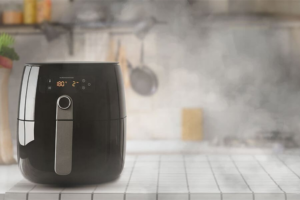# 100GbE QSFP28 Cable Overview and Applications
## Introduction to 100GbE QSFP28 Cables
The 100GbE QSFP28 cable is a high-speed interconnect solution designed to support 100 Gigabit Ethernet (100GbE) networks. As data centers and enterprise networks continue to demand higher bandwidth and faster data transmission speeds, QSFP28 cables have become an essential component in modern networking infrastructure.
## Technical Specifications
The QSFP28 (Quad Small Form-factor Pluggable 28) cable is the fourth generation of the QSFP family, supporting data rates up to 100 Gbps. These cables typically come in two main variants:
- Active Optical Cables (AOCs)
- Direct Attach Copper Cables (DACs)
Key Features:
- 4-channel full-duplex transceiver
- Supports 100Gbps data rate (4×25Gbps or 2×50Gbps)
- Low power consumption (typically 3.5W or less)
- Hot-pluggable design
- Backward compatible with QSFP+ ports
## Applications of 100GbE QSFP28 Cables
Data Center Interconnects
QSFP28 cables are widely used in data centers for high-speed connections between switches, routers, and servers. They provide the necessary bandwidth for modern cloud computing and storage applications.
High-Performance Computing
In HPC environments, QSFP28 cables enable fast data transfer between compute nodes, reducing latency and improving overall system performance.
Telecommunications
Telecom providers utilize QSFP28 cables in their core networks to handle increasing bandwidth demands from 5G networks and other high-speed services.
Enterprise Networking
Large enterprises deploy QSFP28 cables for backbone connections between network switches and routers, ensuring smooth operation of bandwidth-intensive applications.
## Choosing the Right QSFP28 Cable
When selecting a 100GbE QSFP28 cable, consider the following factors:
- Distance requirements: AOCs for longer distances (up to 100m), DACs for shorter runs (up to 7m)
- Power consumption: AOCs generally consume more power than DACs
- Cost considerations: DACs are typically more cost-effective for short-range applications
- Environmental factors: EMI sensitivity may favor optical solutions
## Future of QSFP28 Technology
As network demands continue to grow, QSFP28 cables will remain relevant due to their balance of performance, power efficiency, and cost-effectiveness. The technology is expected to evolve with higher density solutions and improved power efficiency to meet future networking requirements.
Many manufacturers are already developing QSFP28-DD (Double Density) solutions that can support up to 200Gbps while maintaining backward compatibility with existing QSFP28 infrastructure.
Keyword: 100gbe qsfp28 cable
